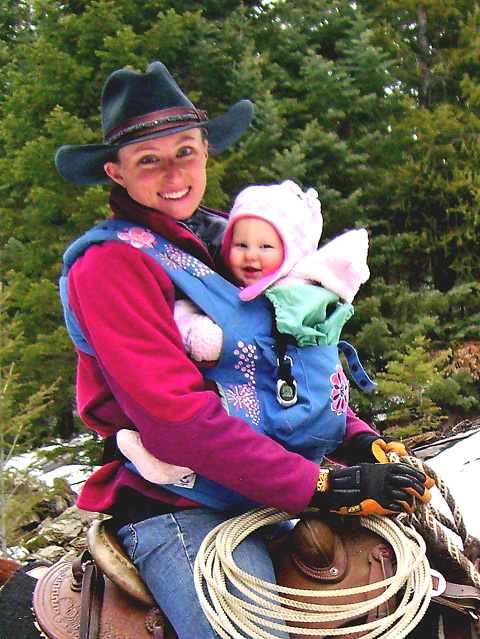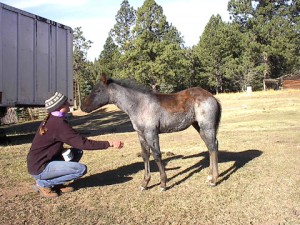
I kept hearing about an outstanding Therapeutic Riding (TR) instructor called Christina Savitsky – and when I did some research to find her I discovered she lives about 15 minutes from my home!
She describes herself “I am a full-time cowgirl on the Pecos Bar X Bar Ranch here in Northern New Mexico. My handsome husband Ethan & I manage 13,000 acres and ALL the animals that come along with it. I have been horse ‘crazy’ all my life, and bought my first horse with a loan from my Grandpa at age 13.”
Her college education was entirely focused on therapeutic riding as is her program and she has been certified by several professional organizations. If you ever get sore riding or feel out of balance she’s the one to talk to. She also does Yoga and Horsemanship clinics.
From her website:
“First, I’ll help you find your neutral pelvic position. There are a number of exercises that I will coach you through to find your neutral pelvic position, including riding your horse bareback, plus certain yoga & Pilates exercises. When you think you have it, we’ll check through e-mailed photos or if time and distance allow, we can get together.
“Next, we’ll take a very close look at your saddle to make sure that your saddle allows you to easily find and hold your correct pelvic position. Just because your saddle fits you from front to back (your seat size), doesn’t mean that it’s the right width or has the right slope to allow your upper leg to drop comfortably out of your hip joint. If the slope/rise of your seat is too steep or too flat, it will force more of your body weight to the front or back of your pelvis, which can put undue pressure on your seat bones or your pelvic arch at the front of your pelvis. These concerns are especially relevant to us women!
 “Once you’ve found your neutral pelvic position you will find that your legs automatically fall where they need to be. Have you ever found yourself knowing that you need to cue your horse in a different position and struggling to get your foot into the correct position to cue? When your pelvis is neutral and your hip, knees, and ankles are relaxed, your leg will fall where it needs to be…with no struggle! I swear!
“Once you’ve found your neutral pelvic position you will find that your legs automatically fall where they need to be. Have you ever found yourself knowing that you need to cue your horse in a different position and struggling to get your foot into the correct position to cue? When your pelvis is neutral and your hip, knees, and ankles are relaxed, your leg will fall where it needs to be…with no struggle! I swear!
“Next, we’ll focus on increasing your body awareness. It’s important for you to be conscious of being balanced, relaxed, and comfortable while you’re riding (to really get into this check out my new Cowgirl Yoga page). This is where my therapeutic riding expertise really comes in handy. We’re going to evaluate the way you move in comparison to your horse’s movement. This is twice as important if you are recovering from an injury that has kept you away from riding. I can even help you pick a horse that moves in a way that will be most beneficial to your recovery.
“The reason horses are used in therapy is based on the similarities between riding and walking. When riding a horse, your hips are passively moved three-dimensionally in the same movement that your hips naturally make when you’re walking. There is a side-to-side shift, an anterior/posterior tilt, and bilateral rotation. Depending on the horse that you choose to ride, you can accent one of these movements more than another but in riding just as in walking; all three dimensions of movement will always be present. Through your movement-evaluation, we’ll bring awareness to areas of your body that need to be relaxed as well as uneven areas that need attention.
“Many of us think we’re well balanced in our seat and riding, but in all reality our normal day-to-day exercises have really thrown us off balance. For example, I drive a standard transmission. That means working the clutch with my left foot and shifting with my right hand, I often find my left leg further forward than my right when riding. Think of the things you do on a regular basis that may favor one side of your body over the other, wiggling that mouse while reading this website, holding the phone between your ear and your shoulder, or always leading your horse from the same side, the list goes on and on.
“Bringing awareness to your body starting with your neutral pelvic position will help your riding tremendously, your body will thank you and your horse will thank you.”
You can get more information at her website by clicking HERE.
Or her Facebook page by clicking HERE.
Recommended!!
